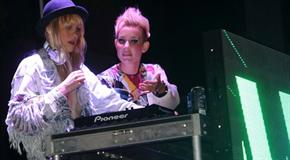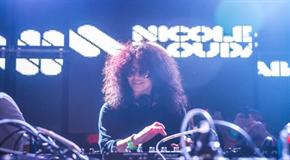Features
When It Comes To Electronic Dance Music, Where My Girls At?
This weekend’s

And lest you think that number seems low: “I think that sounds like a higher than normal number,” said Miriam Nervo, one-half of the Australian EDM duo NERVO, which includes her sister Olivia.
Other festivals have featured one or two women, while some don’t have any at all.
But outside of DJ’ing, women make up other parts of the dance music world. They appear as vocalists on most of the thumping tracks that have been spun over and over for decades and they also work as songwriters as well as managers of top talent, such as Caroline Prothero (Guetta), Amy Thomson (Swedish House Mafia) or Stephanie LaFera (Kaskade).
Nervo, who also has had success as a songwriter with her sister for acts like Kesha, Kylie Minogue and even co-penned Guetta’s breakout pop anthem, 2009’s “When Love Takes Over,” said though on paper the EDM world looks like a boys’ club, that’s not the case.
“Our experience has really been so positive from the boys,” Nervo said.
Other women have echoed her statement, including Nicole Moudaber, who is performing and hosting her own stage dubbed “MoodZONE” at Citi Field for EDC New York.
“I never even thought about it; it never really crossed my mind. I do what I do and I live in my own club in my own world, and I never had obstacles as such –never,” said the performer, who was born in Nigeria to Lebanese parents. “It’s really something that I haven’t experienced to be honest. At the end of the day the music that you make has no gender, no color.”
Nervo and Moudaber said they haven’t faced uphill battles in EDM because they are women, unlike in other fields.
But the lack of women DJs has been a part of the EDM conversation for the last year. It reached a new height when DJ Magazine – the definitive source for news and info on DJs, dance music and its culture – released its 25th anniversary issue last month, featuring 25 male DJs on its cover and zero women. The British-based magazine’s 2015 Top 100 list of DJs only included three female acts, with NERVO in the highest position at No. 24 (the female duo Krewella was at 81 and Miss K8 at 94).
“My guess is maybe there’s the thought that it’s more challenging for women so less women go for it because maybe they’re intimidated by it,” said Pasquale Rotella, the CEO of Insomniac, which produces EDC festivals around the world. “And I would hate for that to be the case. If that is, I’d love to help change that.”
In 2007, Tatiana Alvarez was so over being ignored that she transformed and became DJ Musikillz, a male performer. She wore facial hair and loose clothing, hid her breasts and booked more gigs as a man. Warner Bros. is turning her story into a movie.
“There were prejudices toward women, definitely back then. It was a different industry, it was a different time,” said the Los Angeles-performer, who disguised herself as a man for a year. “It was definitely ‘cause I was a girl, ‘cause I was a sexy girl.”
Writer and former Beatport editor Katie Bain said there may be a lack of female DJs because “women historically have not been as involved in STEM and computer engineering and all of that stuff that one needs to know how to do in order to make electronic music. Women haven’t been as prevalent in those areas.”

Bain, who will moderate a panel at the EDMbiz Conference & Expo next month called “Beyond the Boys’ Club: What’s Next for Women in Dance Music,” said that as the topic of female DJs “has gotten more attention, I feel that women are getting booked more.”
Moudaber encourages other women to grab the bulls by the horns – like she’s done in her six-year career as a DJ and producer.
“If women want to take to that path, it’s out there and it’s available. It’s down to the women to choose if they want to or not. It’s not easy job and it’s not cut out for everybody,” she said.